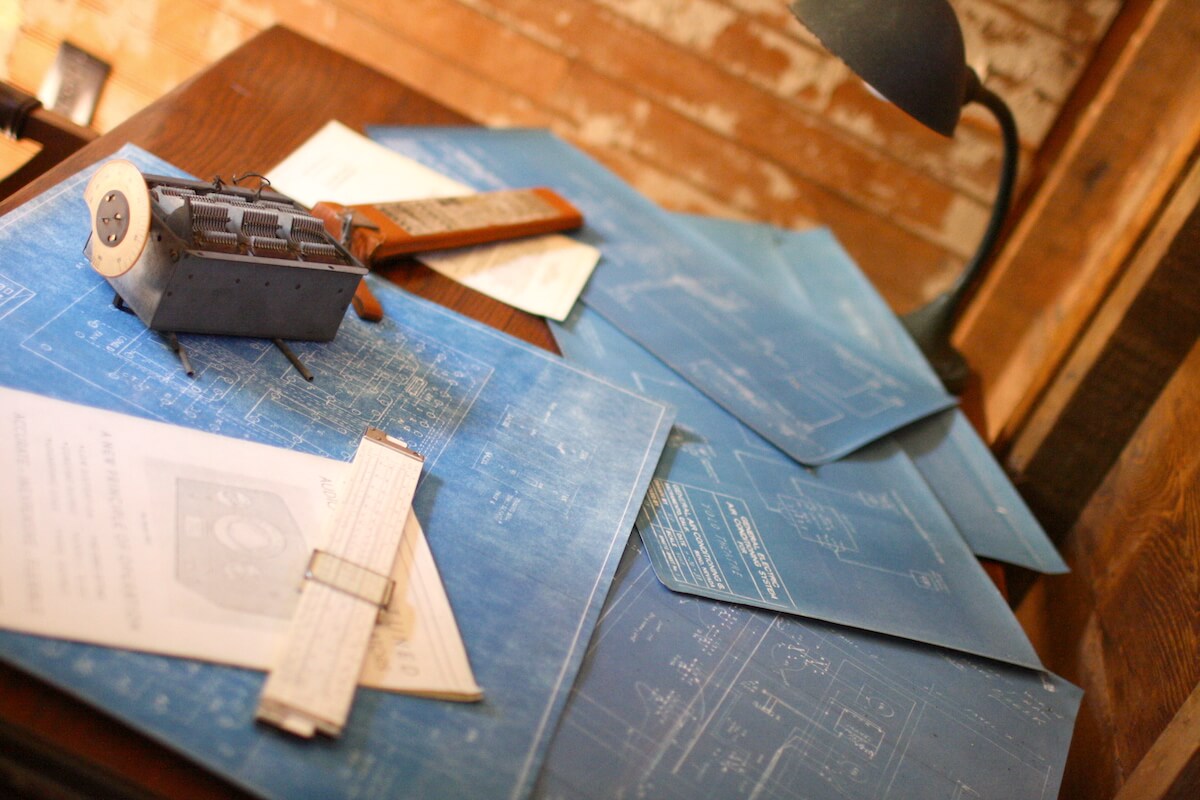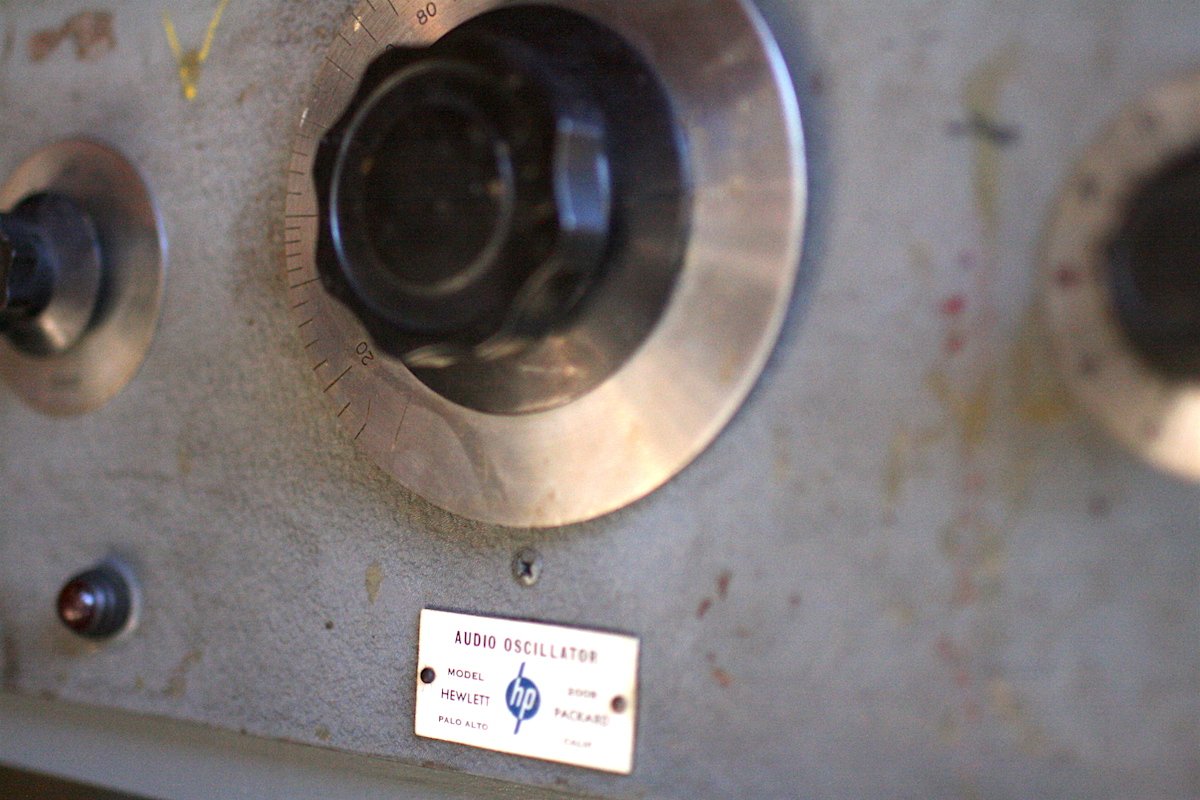Already a story: how did a startup culture start in the 1930s
Today I will tell you where the startup culture came from in the form in which we know it now. I hope that you get a cycle of materials on the topic, if you find this interesting.
 Pictured: HP garage | Brian Solis | Flickr | CC BY
Pictured: HP garage | Brian Solis | Flickr | CC BY
In the late 1930s, two students from Stanford University - William Hewlett and David Packard - actually became one of the "founders" of that Silicon Valley, which is well known to all of us today.
Their garage has become a historical landmark. He is considered the birthplace of Silicon Valley and one of the origins of a startup culture that gave rise not only to Hewlett-Packard.
Belief in the fact that in the USA everyone can realize their ideas with the help of hard work is the essence of the notorious “American dream”. This way of thinking did not appear yesterday.
It was distributed at the beginning of the 20th century. Although at that time the country faced a crisis, the standard of living grew on the wave of immigration and industrialization, and in the 30s a new symbol of the middle class appeared in the USA - a house in the suburbs - as a result of hard work.
In addition to the plot, there was always a garage near the house - a separate building, which meant that the family could afford a car. Gradually, the garage turned into a space for a hobby from a place for car maintenance. Like now, people used it to engage in creativity.

Photo: Your Best Digs | Flickr | CC BY
They drew, played musical instruments, created DIY projects. Some turned their passion into a business, and new companies were born in garages.
This is how the culture of technology startups appeared.
In the first half of the 20th century, people perceived inventions as a victory of man over the forces of nature. The idea of a technological “game” with the world led, among other things, to the flourishing of publications on science and technology. Such journals published instructions for self-assembly of devices.
Modern Electrics was the first edition, which was completely devoted to electronics and radio engineering. In 1911, its circulation amounted to 52 thousand copies.

In the photo: advertising in the magazine Modern Electrics | PeriodPaper
Similar publications wrote not only about technology and DIY projects. The Electrical Experimenter published science stories along with scientific articles. The magazine also included an ad section that encouraged readers to communicate and create collaborative projects.
This "formula" was successful.
Articles have become a source of information that readers used in practice. Artistic stories excited the imagination of people and described what scientific discoveries could transform into, and the ad section gave the opportunity to share experiences and inventions.
At that time, invention was becoming more accessible. Electronic components became cheaper, and more information appeared. Therefore, ordinary people were able to try their hand at inventing without serious expense. Only prototype separated them from success.
The inventors did not have to create their own production to earn. New inventions interested many, and the patent system made it possible to monetize intellectual property.
Then the first “patent wars” passed when different people and companies fought for the right to call the invention theirs. For example, Glenn Curtiss worked on the creation of the aircraft simultaneously with the Wright brothers.(Glenn Curtiss). He refused to pay the Wright brothers, who had a patent on the aircraft, for using the technology. Wright sued Curtiss.

Pictured: oscillator in HP garage | Brian Solis | Flickr | CC BY
People were interested in amateur inventions. In the sections with ads published many proposals for the sale of patents. There were also offers of help to “novice inventors”, which in meaning weresimilar to today's start-up incubators.
In the US, there was a successful situation for entrepreneurs. On the one hand, anyone could engage in technology and come up with an innovative product in his garage. On the other hand, large companies were still recovering from the Great Depression. Entrepreneurs have the opportunity to really change the market.
In the 1930s, the culture of startups originated, but has not yet flourished. The break between the world wars was too short. During World War II, the technology industry faded into the background. The focus was exclusively on military production.
After the war, an event occurred that turned the world of technology. This is the invention and production of the first transistors. Then entrepreneurs gave a new impetus to the development of start-up culture and the entire IT industry. I will talk about this period in the following material.
What else do I do on Habré and beyond:
 Pictured: HP garage | Brian Solis | Flickr | CC BY
Pictured: HP garage | Brian Solis | Flickr | CC BYIn the late 1930s, two students from Stanford University - William Hewlett and David Packard - actually became one of the "founders" of that Silicon Valley, which is well known to all of us today.
This is the same story about a startup "out of the garage."William and David created their first commercial product - the HP200A sound oscillator - in the suburb of Palo Alto. Then it was one of the most affordable options to get started - it was possible to place the necessary equipment in the garage and start a small production.
Their garage has become a historical landmark. He is considered the birthplace of Silicon Valley and one of the origins of a startup culture that gave rise not only to Hewlett-Packard.
Why in the garage
Belief in the fact that in the USA everyone can realize their ideas with the help of hard work is the essence of the notorious “American dream”. This way of thinking did not appear yesterday.
It was distributed at the beginning of the 20th century. Although at that time the country faced a crisis, the standard of living grew on the wave of immigration and industrialization, and in the 30s a new symbol of the middle class appeared in the USA - a house in the suburbs - as a result of hard work.
In addition to the plot, there was always a garage near the house - a separate building, which meant that the family could afford a car. Gradually, the garage turned into a space for a hobby from a place for car maintenance. Like now, people used it to engage in creativity.

Photo: Your Best Digs | Flickr | CC BY
They drew, played musical instruments, created DIY projects. Some turned their passion into a business, and new companies were born in garages.
This is how the culture of technology startups appeared.
What helped DIY-content
In the first half of the 20th century, people perceived inventions as a victory of man over the forces of nature. The idea of a technological “game” with the world led, among other things, to the flourishing of publications on science and technology. Such journals published instructions for self-assembly of devices.
Modern Electrics was the first edition, which was completely devoted to electronics and radio engineering. In 1911, its circulation amounted to 52 thousand copies.

In the photo: advertising in the magazine Modern Electrics | PeriodPaper
Similar publications wrote not only about technology and DIY projects. The Electrical Experimenter published science stories along with scientific articles. The magazine also included an ad section that encouraged readers to communicate and create collaborative projects.
This "formula" was successful.
Articles have become a source of information that readers used in practice. Artistic stories excited the imagination of people and described what scientific discoveries could transform into, and the ad section gave the opportunity to share experiences and inventions.
One of the readers of such magazines in childhood and adolescence was David Packard. He was interested in radio engineering and read science fiction.
What else is important to note
At that time, invention was becoming more accessible. Electronic components became cheaper, and more information appeared. Therefore, ordinary people were able to try their hand at inventing without serious expense. Only prototype separated them from success.
The inventors did not have to create their own production to earn. New inventions interested many, and the patent system made it possible to monetize intellectual property.
Then the first “patent wars” passed when different people and companies fought for the right to call the invention theirs. For example, Glenn Curtiss worked on the creation of the aircraft simultaneously with the Wright brothers.(Glenn Curtiss). He refused to pay the Wright brothers, who had a patent on the aircraft, for using the technology. Wright sued Curtiss.
This led to litigation that lasted 12 years and jeopardized the production of aircraft during the First World War.

Pictured: oscillator in HP garage | Brian Solis | Flickr | CC BY
People were interested in amateur inventions. In the sections with ads published many proposals for the sale of patents. There were also offers of help to “novice inventors”, which in meaning weresimilar to today's start-up incubators.
In the US, there was a successful situation for entrepreneurs. On the one hand, anyone could engage in technology and come up with an innovative product in his garage. On the other hand, large companies were still recovering from the Great Depression. Entrepreneurs have the opportunity to really change the market.
This managed to make HP. The company sold its devices 4-6 times cheaper than its competitors. HP had low costs and a patent for an innovative product, and the first large order from Disney only accelerated HP's growth and development.
Conclusion
In the 1930s, the culture of startups originated, but has not yet flourished. The break between the world wars was too short. During World War II, the technology industry faded into the background. The focus was exclusively on military production.
After the war, an event occurred that turned the world of technology. This is the invention and production of the first transistors. Then entrepreneurs gave a new impetus to the development of start-up culture and the entire IT industry. I will talk about this period in the following material.
What else do I do on Habré and beyond:
- I record a podcast about those who make content for IT companies [ iTunes ] [ Web ] [ Habr ]
- I delve into the story [my habrapostah about SXSW and Techstars Startup Digest ]
- Hiring photo tours of coworking [ SOK ] [ #tceh ] [ Key ]
Additional reading in our microformat: of The History of the SXSW: How It the All the Started TechStars the Startup Digest: the From the Launch to the Today How the The Early Success Stories Shaped the Modern State of the Industry Tech of The Archetypes of the Game: How Storytelling for the Works Tech Brands




